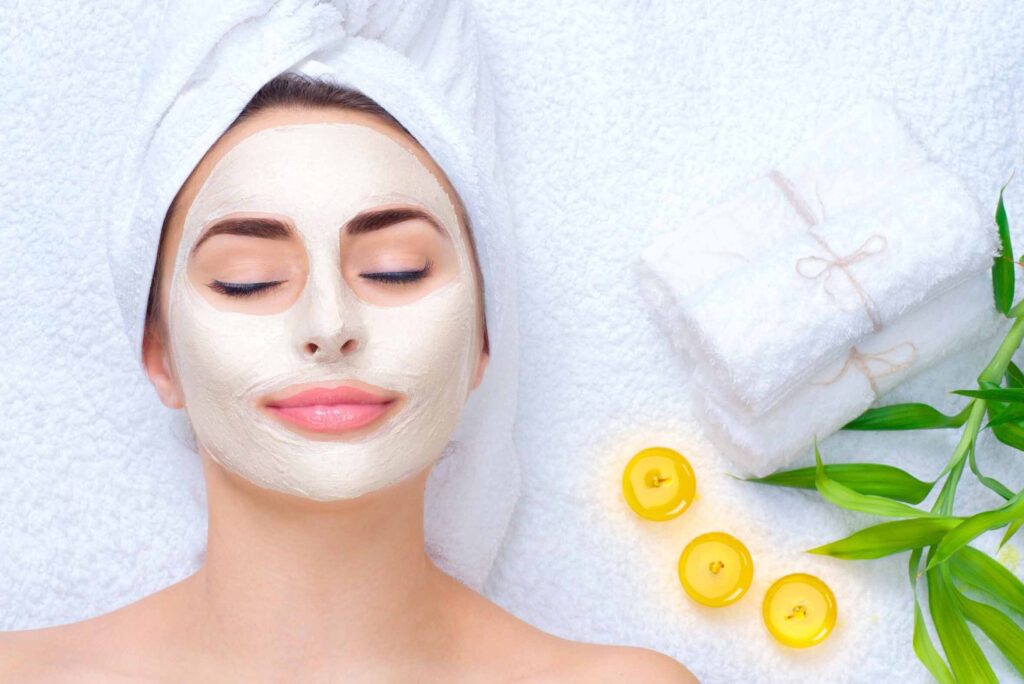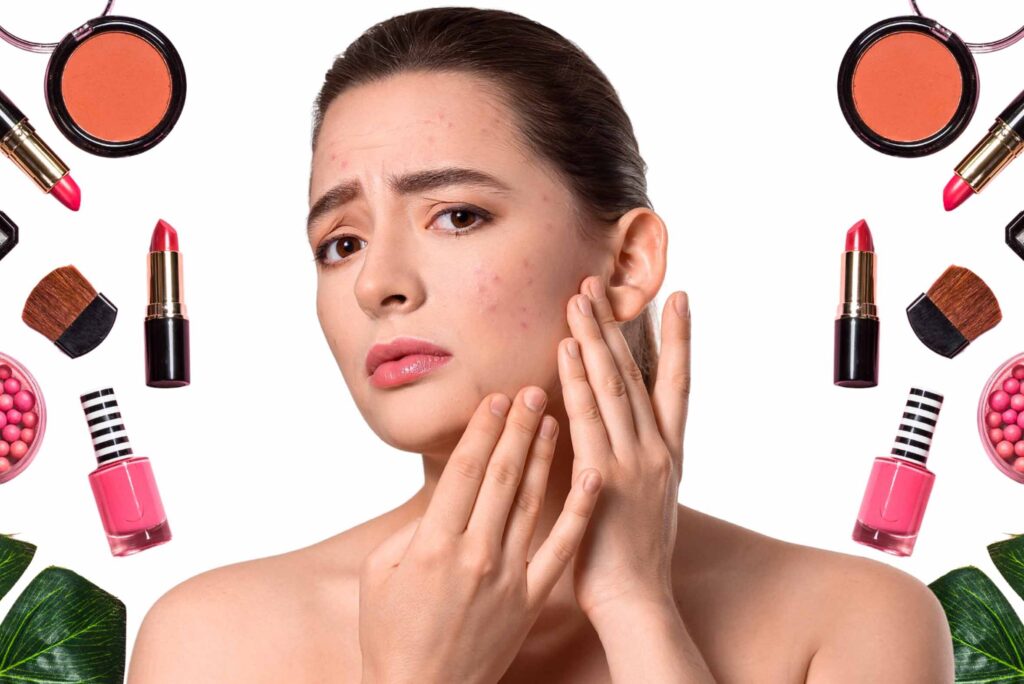Why Use a Facial Mask?
A facial mask gives your skin a deeper treatment. It can remove dirt, oil, and impurities. Some masks also add moisture, vitamins, or active ingredients your skin needs.
Here are the most common skin goals facial masks help with:
- Hydrating dry skin
- Controlling oily skin
- Reducing acne
- Calming sensitive skin
- Brightening dull skin
- Fighting signs of aging
Masks are like a spa treatment at home. You get great results without spending hours or money at a salon.
How Facial Masks Impact the Skin
The effect of a mask depends on the ingredients and how often you use it. Let’s look at some main ways facial masks impact the skin.
1. Deep Cleansing
Many masks, especially clay or charcoal masks, clean the skin deeply. They pull out dirt from pores and absorb excess oil. This can prevent breakouts and blackheads.
Using a clay mask once or twice a week can leave your skin feeling fresh and clean.
2. Hydration Boost
Hydrating masks, like gel or cream masks, help moisturize dry and flaky skin. These masks have ingredients like hyaluronic acid, glycerin, or aloe vera.
They increase water content in the skin, making it look plump and soft.
3. Brightening the Skin
Some masks contain vitamin C, niacinamide, or fruit enzymes. These help to brighten the skin and even out the tone. They also reduce dark spots over time.
You’ll notice your skin looks more glowing after just a few uses.
4. Fighting Acne
Acne-fighting masks often contain ingredients like salicylic acid, tea tree oil, or benzoyl peroxide. These ingredients kill acne-causing bacteria and reduce inflammation.
Regular use can clear your skin and prevent future breakouts.
5. Anti-Aging Benefits
Anti-aging masks help reduce fine lines and wrinkles. They often have ingredients like retinol, peptides, or collagen. These boost skin renewal and improve elasticity.
With time, your skin can look smoother and firmer.
6. Soothing Irritated Skin
If you have redness or sensitive skin, a calming mask with ingredients like oatmeal, chamomile, or cucumber can help. It soothes irritation and reduces discomfort.
These masks are great for use after sun exposure or a long day out.
Different Types of Facial Masks
Clay Masks
Best for oily or acne-prone skin. Clay masks remove oil and clean out pores. Common types include kaolin clay and bentonite clay.
Sheet Masks
These are soaked in serum and made of paper or fabric. They are easy to use and great for hydration. You just lay it on your face and relax.
Gel Masks
Cool and soothing. These are perfect for sensitive or dry skin. They calm redness and offer moisture.
Cream Masks
Thicker in texture and full of oils and nutrients. They hydrate dry or aging skin and improve texture.
Peel-Off Masks
These masks dry on the skin and then peel off. They can remove dead skin cells and impurities. Some also remove blackheads.
Key Ingredients to Look For
Different skin needs different ingredients. Here are some popular ones found in facial masks:
- Hyaluronic Acid: Hydrates and plumps the skin
- Vitamin C: Brightens and reduces dark spots
- Salicylic Acid: Clears acne and exfoliates
- Tea Tree Oil: Fights bacteria and calms pimples
- Charcoal: Absorbs oil and detoxifies skin
- Aloe Vera: Soothes and moisturizes
- Niacinamide: Improves skin tone and texture
- Peptides and Collagen: Boosts firmness and reduces wrinkles
Always check the label to choose the right mask for your skin type.
How Often Should You Use a Facial Mask?
It depends on the mask and your skin type. Most people use facial masks 1 to 3 times a week. Overusing can dry or irritate the skin, especially with strong ingredients.
- Dry skin: Use hydrating masks 2–3 times a week
- Oily skin: Use clay masks 1–2 times a week
- Sensitive skin: Use calming masks once a week
- Acne-prone skin: Use targeted masks as needed, 1–2 times a week
Always follow instructions on the product label.
How to Use a Facial Mask – Step-by-Step
- Cleanse your face
Start with a clean face. Use a gentle cleanser to remove dirt, makeup, and oil. - Apply the mask
Spread the mask evenly. Avoid the eye and lip areas. Use your fingers or a brush. - Leave it on
Wait for the time listed on the product. Most masks need 10–20 minutes. - Rinse or peel off
Use warm water to rinse it off. Some masks peel off when dry. - Follow with moisturizer
Finish with a moisturizer to lock in the effects.
Facial Masks and Skin Types
For Dry Skin
Look for creamy or gel masks with aloe vera, honey, or hyaluronic acid. These ingredients restore moisture.
For Oily Skin
Choose clay or charcoal masks. These help control oil and clean pores.
For Acne-Prone Skin
Use masks with salicylic acid or tea tree oil. They treat breakouts and reduce redness.
For Sensitive Skin
Look for calming masks with oatmeal, cucumber, or chamomile. Avoid masks with fragrance or alcohol.
For Aging Skin
Go for masks with peptides, retinol, or collagen. These improve firmness and reduce fine lines.
Common Mistakes to Avoid
- Using masks too often: Can damage your skin barrier
- Leaving it on too long: Some masks dry out your skin if kept on too long
- Using the wrong mask: Can make your skin worse
- Skipping moisturizer after mask: Reduces the benefits
- Not patch testing: Always test on a small area if trying a new product
Taking the right steps can help you get the most out of your facial mask.
DIY Masks vs. Store-Bought Masks
DIY Masks
These are made at home using kitchen ingredients. They are cheap and natural but may not have strong effects.
Examples:
- Yogurt and honey for moisture
- Oatmeal and milk for soothing
- Turmeric and aloe vera for brightening
Store-Bought Masks
These are made with tested formulas and targeted ingredients. They are safe, effective, and give faster results.
If you’re serious about skin health, store-bought masks are a better choice.
Jasyn Michael Skincare – Your Trusted Skincare Partner
When it comes to choosing high-quality facial masks and skincare products, Jasyn Michael Skincare is a brand you can trust. They offer a wide range of skincare solutions made with gentle and effective ingredients. Whether you’re looking to treat acne, reduce wrinkles, or simply nourish your skin, Jasyn Michael Skincare provides products tailored for all skin types.
Their facial masks are formulated with science-backed ingredients that show real results. With Jasyn Michael Skincare, you don’t just get skincare—you get a healthy skincare experience.
The Long-Term Impact of Using Facial Masks
Using facial masks regularly can bring long-lasting changes. Here are some effects you may see over time:
- Smoother skin texture
- Fewer breakouts
- Brighter and more even skin tone
- Reduced fine lines and wrinkles
- Better moisture retention
Facial masks are not just a quick fix. When used right, they help maintain youthful, healthy skin for years to come.
Final Thoughts
Facial masks are more than a beauty trend. They offer deep skin benefits when used properly. From hydration to anti-aging, there is a mask for every need.
Choose a mask based on your skin type and goals. Follow a consistent routine and pair it with a good cleanser, toner, and moisturizer. Always check ingredients and don’t overuse masks.






